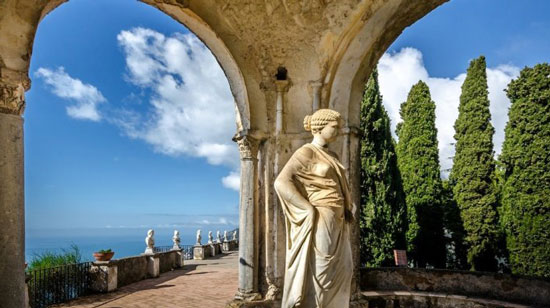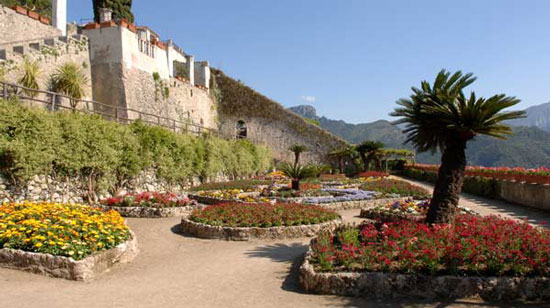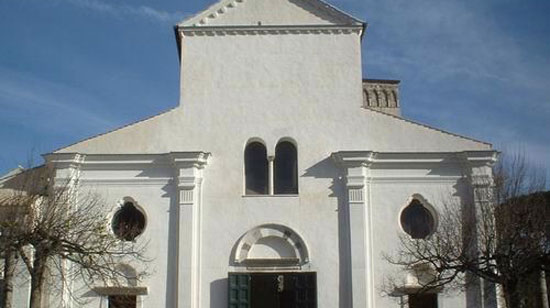The first reliable mentions of Villa Cimbrone can be found around the 11th century, intermingling with those of Ravello’s golden era. The origins of its name come from the rocky outcrop on which it stands: this was part of a large estate with lush vegetation covering over eight hectares that was known as “Cimbronium”.
It initially belonged to the aristocratic Acconciajoco family. In the mid-1300s it passed into the hands of the powerful and wealthy Fuscos, a noble family from Ravello who were related to the Pitti family in Florence and the D’Angiò family from Naples.
Thanks to the enthusiasm and dedication of the Vuilleumier family, for a few decades now Villa Cimbrone has been restored to its former standing as a prestigious historical site and botanical garden, after a period of relative decline around the time of the Second World War.


